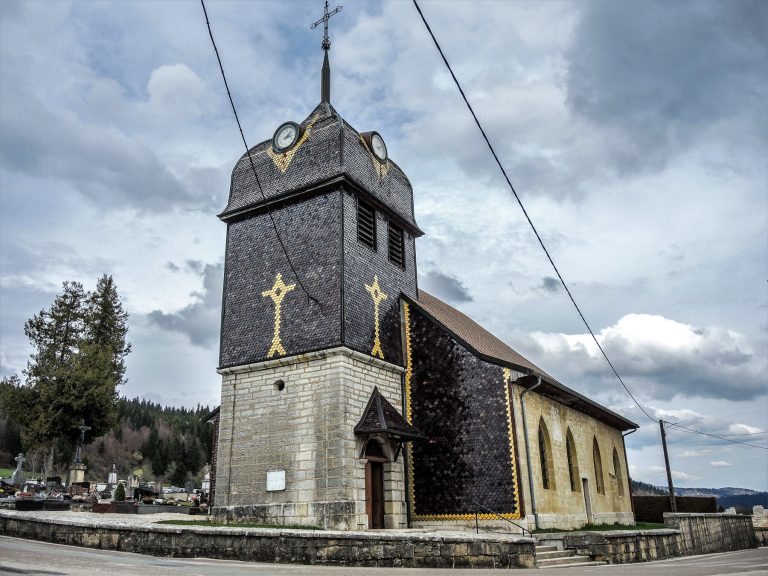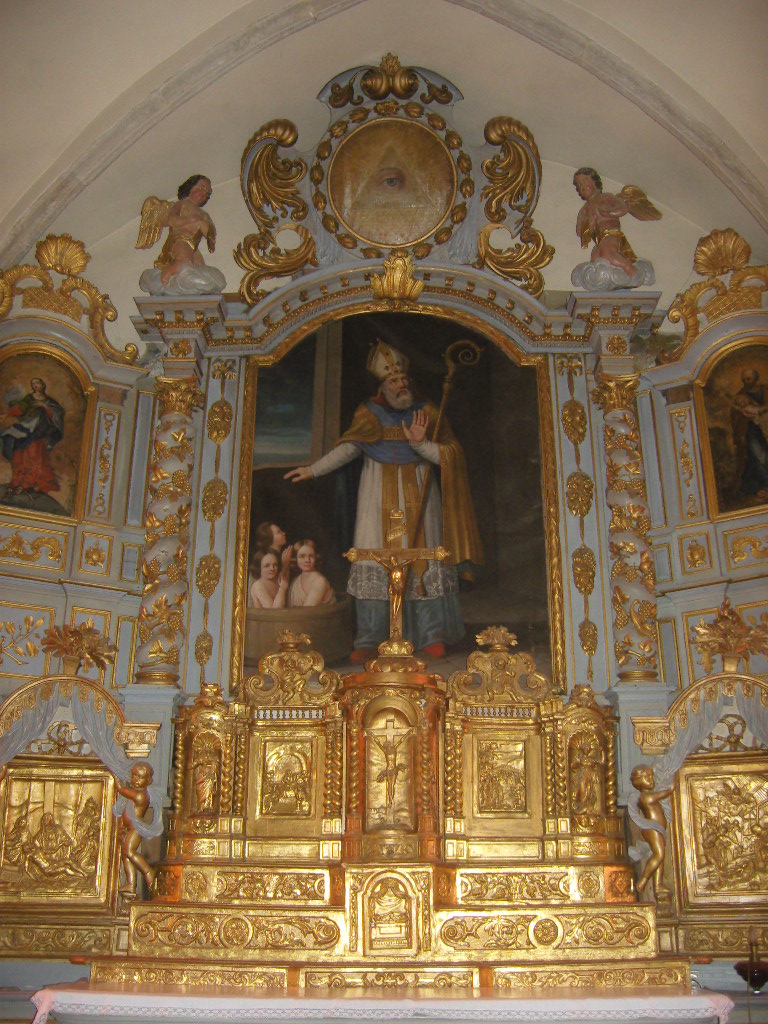In 2024 > Anne FISCHER
In 2018 > Nino LAISNÉ – 3 cœurs
Until the Revolution, the inhabitants of Oye-et-Pallet depended on the parish of Saint-Etienne de Pontarlier and had to go to services in Pontarlier. It was only in 1494 that they were granted permission to build a church which nevertheless remained vicarial of Pontarlier. It is, in its current form, the result of modifications and transformations carried out over the centuries.
It is located in the upper part of the village in the enclosure which delimits the cemetery. It is made up of an 18th century bell tower (1749) covered by an imperial roof made of glazed tiles and opening onto a nave made up of a central nave, two aisles, and a choir. The first two bays of the central vessel were built at the end of the 15th century (1494) and the other two at the end of the 15th century. The third bays of the aisles were built in the 17th century and the second and fourth at the end of the 18th century. The choir is also from the 18th century (1712). The whole is covered by ribbed vaults whose arches rest on the dividing pillars between the aisles and the central nave.
The interest of this small church lies in the altarpiece of the main altar with a pediment and twisted columns around which vine branches and golden grapes wind. In the center, an unsigned painting representing the patron of the parish, Saint Nicholas, undoubtedly bishop of Myra in Anatolia. Its legend is rich in miraculous and legendary events, the best known of which is that of the three children killed and put in the salt pan by a butcher and resurrected by Saint Nicholas (the painting on the main altar).
The tabernacle of the main altar is also a very interesting work created in 1716, by François Gagelin, carpenter and wood sculptor. The woodwork of the altarpiece continues in the aisles in the form of half-height paneling.
All of the abstract stained glass windows were made in 1956 by young master glassmaker Paul Virilio on the designs of the painter Serge Rezvani.
Text by Joël GUIRAUD
GPS : 46,854445 / 6,331968


